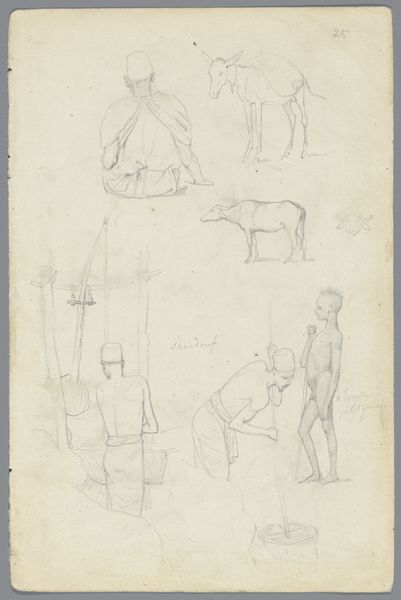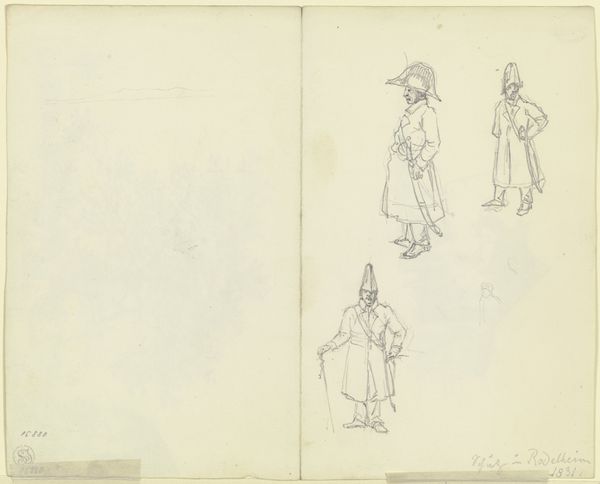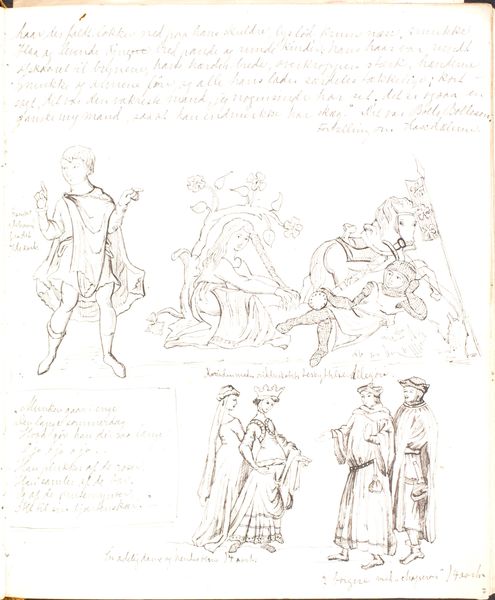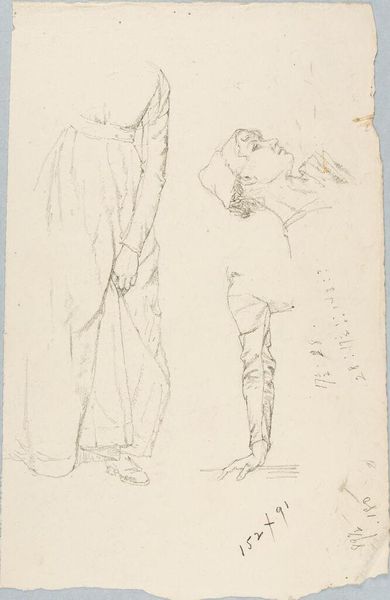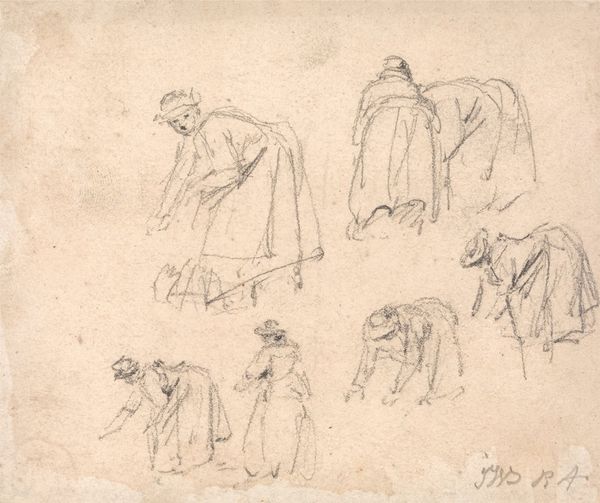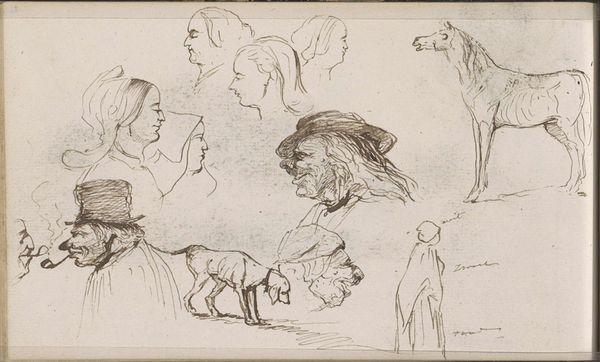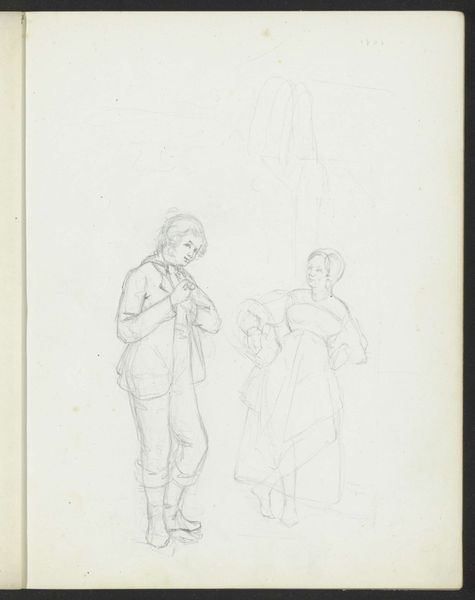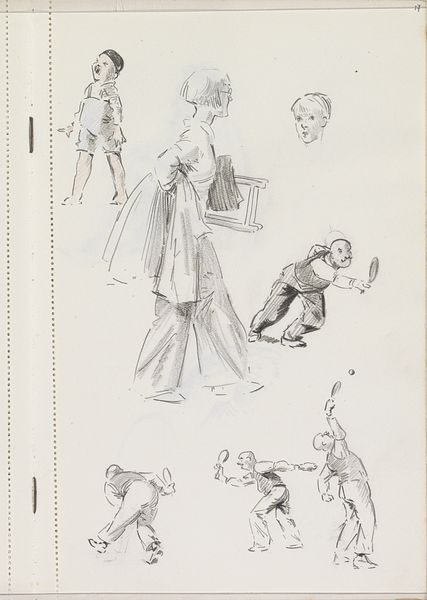
Pige med tamburin, ung stående mand og stejlende hest 1846
0:00
0:00
drawing, pencil
#
portrait
#
drawing
#
landscape
#
figuration
#
pencil
Dimensions: 205 mm (height) x 122 mm (width) (bladmaal)
Curator: Johan Thomas Lundbye created this drawing, “Pige med tamburin, ung stående mand og stejlende hest,” or “Girl with tambourine, young standing man and rearing horse” in 1846. Editor: My first thought is that the energy in this pencil sketch is captivating. The rearing horse seems to defy the static nature of the medium, leaping off the page. Curator: Indeed. The context here is Lundbye's deep engagement with Romantic nationalism. The figures seem to embody an idealized version of Danish peasant life and perhaps a veiled critique of urban bourgeois existence. Consider also the power dynamics, maybe the woman relegated to instrument, while the man and beast project some dominion over their spheres. Editor: I see the figures, but what really intrigues me is the technique. The pencil lines are so delicate, almost ephemeral. Lundbye has focused less on detailed finishing, more on capturing a fleeting moment. Was it a study for a larger work? Is there some social statement regarding the conditions under which such images and illustrations get produced? Curator: While it might be preparatory work, the emotional content is crucial. The girl seems innocent, and the horse is freedom embodied; but the man remains grounded, reflective, a conduit between naturalism and perceived control. Think of how the composition subtly suggests tensions and possibilities between gender and society, or even the colonial dimensions involved in the European male's fascination for untamed, rearing stallions. Editor: I agree. But I'm drawn to how the artist translates the energy of a live model to a flat surface. The rendering of muscles and tendons speaks to Lundbye's intimate understanding of his materials and, perhaps also the labor inherent in representing such vitality in line. Curator: The horse could definitely represent resistance or even the subjugation of raw nature under the yoke of cultural forces. Editor: So we see material and symbol coming together—revealing broader systems of power and the narratives they enable. Thank you for guiding me toward a broader historical framework for appreciating it. Curator: And you, for bringing into light the labor involved, the material process, which opens into a more comprehensive socio-economic appreciation of art and illustration as artifacts and objects.
Comments
No comments
Be the first to comment and join the conversation on the ultimate creative platform.


